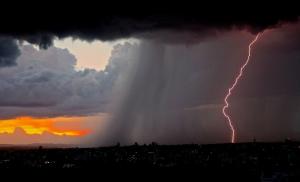Difference between flora and fauna
Flora and fauna are the set of living beings that are part of an ecosystem.
Flora refers to plant species, while fauna is the term used to categorize animals.
Although flora and fauna exist in almost the entire world, each set of plant and animal species responds to specific characteristics according to the geographical and climatic conditions of the region in which they develop, therefore, these are organisms that have evolved and adapted to their environment.
Both flora and fauna are essential to maintain balance in nature, and in many cases relationships are established symbiotic between both groups to ensure the survival and therefore the prolongation of the existence of the ecosystem in which coexist.
| Flora | Fauna | |
|---|---|---|
| Definition | They are all plant species that are part of an ecosystem. | They are all the animal species that are part of an ecosystem. |
| Types |
|
|
| Examples |
|
|
Flora

Flora are all the plant species that are part of the ecosystem of a certain region, either because they grow spontaneously in that place or because they have been cultivated by action human.
The term includes plants with or without flowers, seeds or fruits, aquatic plant species and any plant that contributes to configure the vegetation of a geographical area.
Although flora and vegetation are often used as synonyms, the reality is that flora refers only to species, and vegetation to the distribution of those species in a given space.
The term flora comes from the homonymous Latin, which refers to the name of the goddess of spring.
Types of flora
There are two major classifications of flora
Native flora or native flora
It refers to the plant species that are typical of a particular geographic region, since they grow there naturally.
Examples of native florato Camellia japonica, a flowering shrub native to Japan.
Agricultural flora
They are the plant species that have been introduced into a region by human action.
Examples of agricultural flora: the cultivation of tea in Argentina. The tea tree (Camellia sinensis) is not indigenous to that area, the seeds were grown there for commercial purposes.
For a long time there was a third classification called weed flora, which was used to group plants considered as weeds. However, the category became obsolete as it was confirmed that such species play a role in the ecosystem in which they live.
You may be interested in knowing:
- Types of ecosystems
- Biome types.
Fauna
Fauna is the whole set of animal species that live in a given geographical area in the same period.
As with flora, different types of relationships (symbiotic, competitive) are established in fauna that are essential to maintain balance in nature.
Types of fauna

There are two types of fauna:
Wildlife
Also known as wild fauna, it is all species of animals that are typical of the region in which they are found.
Examples of wildlife: the gray wolf (Canis lupus baileyi) and the scarlet macaw (Ara macao) are native species of Mexico.
Domesticated fauna
These are animal species introduced by humans in a geographical area of which they are not native. Generally, these actions are carried out for economic purposes in the agricultural and livestock sector and do not generate serious consequences.
In other cases, the introduced species end up creating an imbalance in the ecosystem and are known as invasive species. These introductions can be deliberate or accidental, but in any case once they occur they are very difficult to eradicate.
Examples of domesticated fauna: beef cattle, which were introduced to the world from the Middle East for commercial purposes.
An example of an invasive species is the salamander (Ambystoma tigrinum), which was introduced in the United States to serve as bait on fishing trips and became a threat to the native salamander (Ambystoma californiense).
See also:
- Difference between vertebrate and invertebrate animals.
- Difference between animal and plant cell.



